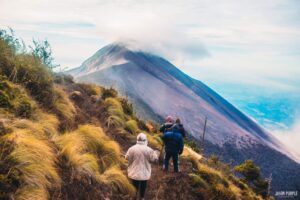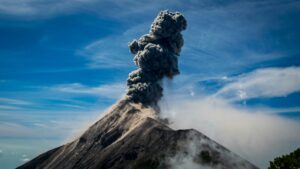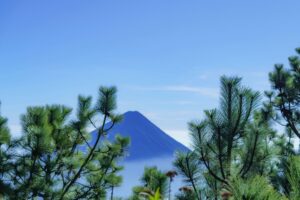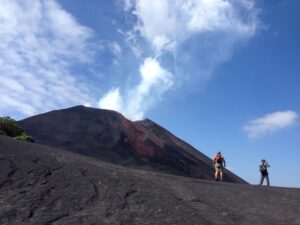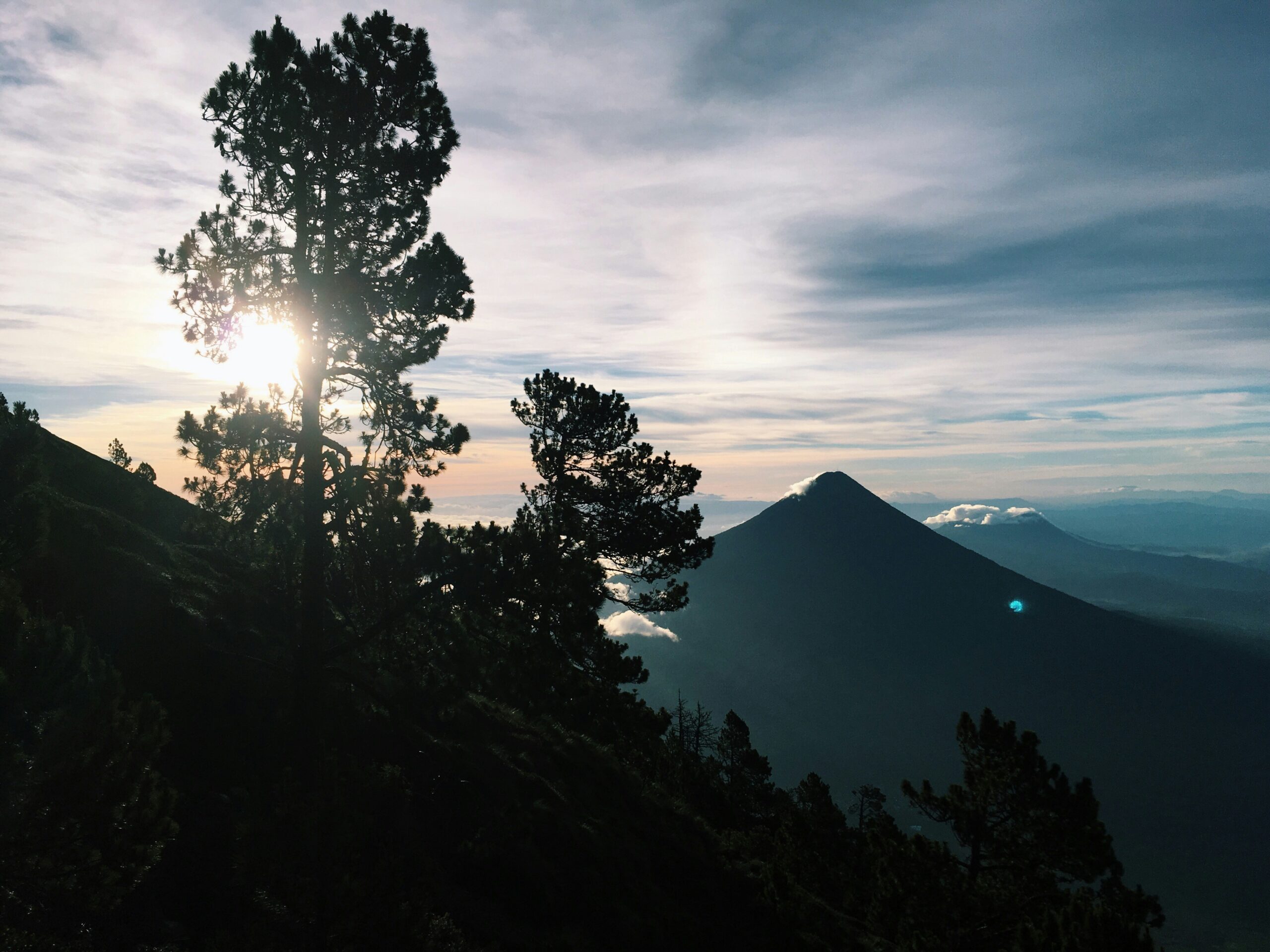
Exploring the Geological Wonder of Guatemala: Discovering Acatenango Volcano
Welcome to Guatemala, the land of ancient wonders and natural beauty! Today, we embark on a journey to unravel the geological mysteries of one of its most majestic landmarks: Acatenango volcano. Nestled in the heart of Central America, Acatenango stands tall, boasting a rich tapestry of geological formations and features that have captivated adventurers and scientists alike for centuries.
Composition of Acatenango Volcano
Let’s take a closer look at what the Acatenango volcano is made of. This colossal mountain is mainly built from layers of volcanic rock. These layers formed over millions of years when hot, liquid rock, called lava, erupted from the volcano and then cooled down to become solid rock. The type of rock that makes up Acatenango is called andesite. Andesite is a tough kind of volcanic rock that doesn’t wear away easily, even when faced with forces like wind and water. Its durability is one reason why Acatenango has stood tall for so long, resisting the effects of erosion that can wear down softer rocks over time.
Eruptions Throughout History
Let’s take a closer look at the fiery past of Acatenango’s eruptions. Throughout history, this powerful volcano has woken up many times, sending streams of hot, liquid rock and clouds of ash all around. These eruptions have left their mark on the land and the people who live nearby.
- Prehistoric Eruptions: Acatenango’s volcanic activity started long, long ago before people wrote down dates. Back then, big explosions shaped the land we now call Guatemala.
- Before the Spanish Arrived: Even before the Spanish came to Guatemala, the volcano was rumbling. People who lived there then, like the Mayans, saw the volcano erupt. It was a part of their lives, shaping their stories and how they lived.
- When the Spanish Came (Around 1524): When the Spanish arrived in Guatemala, Acatenango was still active. The volcano showed its power with big eruptions, probably scaring the newcomers and the people who were already there.
- 1773 Eruption: In 1773, Acatenango roared again. It was a massive eruption, spreading ash and smoke far and wide. Imagine the fear and awe of the people seeing such a powerful display of nature’s might.
- 1924 Eruption: Another big eruption happened in 1924. This time, people were more prepared. Scientists and experts were watching closely, trying to understand what was happening. The eruption would have been a sight to behold, with ash and smoke reaching high into the sky.
- Recent Times: While Acatenango has been quiet in recent years, its neighbor, Fuego, has been making noise. Fuego erupts often, sometimes causing trouble for nearby towns and villages. It’s a reminder that even when one volcano sleeps, another can wake up.
- Today: Today, Acatenango still stands tall, watching over Guatemala. Scientists keep a close eye on it, studying its every move. People live and work around the volcano, knowing that its past eruptions are a reminder of the power of nature.
This timeline takes us through the ups and downs of Acatenango’s volcanic history, showing how it has shaped the land and the lives of the people of Guatemala for centuries.
The Dance of Fire and Ice: Acatenango and Fuego
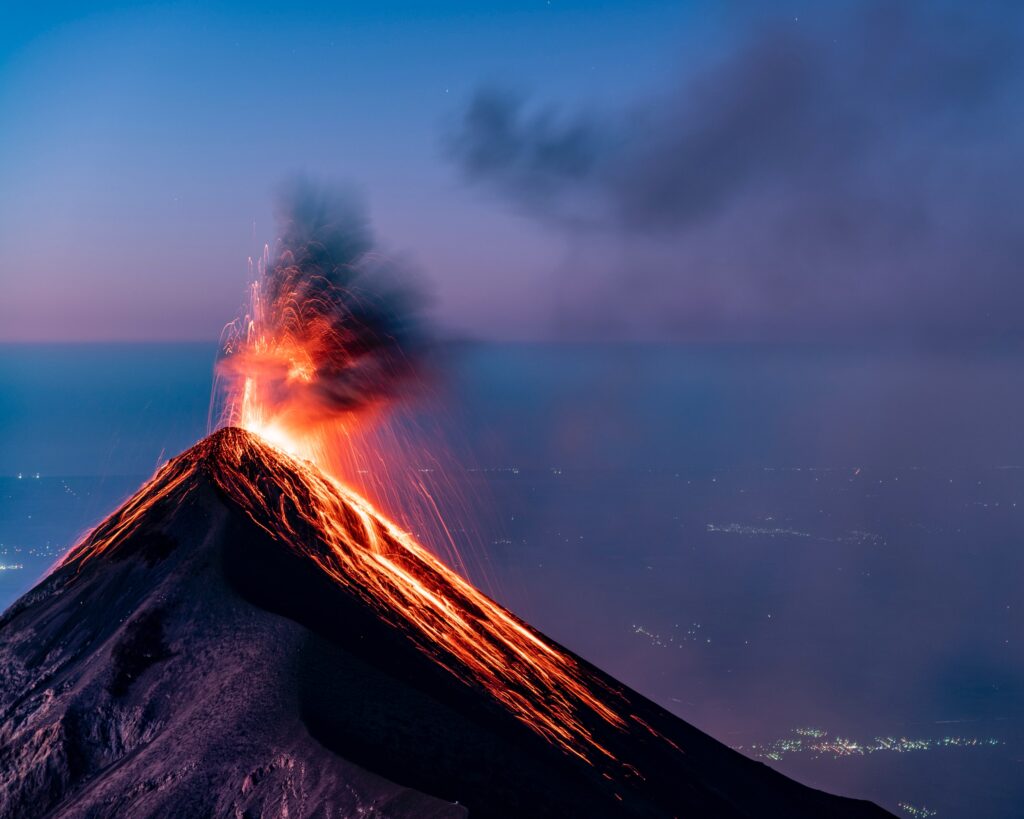
Acatenango and Fuego are two big mountains in Guatemala. They act like siblings, one calm and the other fiery. Acatenango doesn’t erupt much, staying quiet for over a hundred years. But Fuego is always active, throwing out hot rocks and making noise. Even though they’re different, they’re still linked. Acatenango kinda watches over Fuego, like a protective brother.
Neighboring Volcanoes and the Ring of Fire
Acatenango and Fuego aren’t the only impressive volcanoes around. Guatemala sits in a place called the Pacific Ring of Fire. It’s like a giant horseshoe-shaped area around the Pacific Ocean where there’s a lot of shaking and rumbling in the ground. This place has more than 75% of all the active and sleeping volcanoes worldwide, making it super active geologically. Apart from Acatenango and Fuego, Guatemala boasts several other remarkable volcanoes like Pacaya, Santiaguito, and Agua. These mountains add to the volcanic charm of the region, painting a picture of nature’s grandeur and power.
The Impact on the Surrounding Landscape
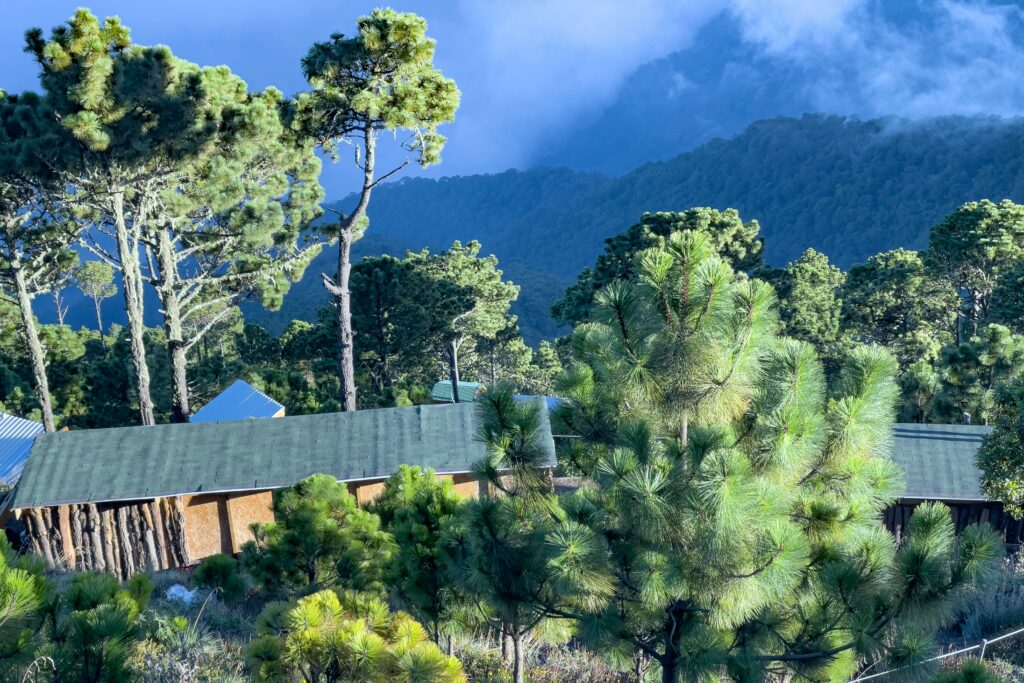
The big mountain called Acatenango doesn’t just sit there looking tall. It affects everything around it, especially the ground. The dirt nearby is super rich because of the volcano. That means it’s perfect for growing stuff like coffee, corn, and avocados. People who live nearby have been using this special dirt for ages to grow tasty food.
Conclusion: A Geological Wonder of Guatemala
As we conclude our exploration of the Acatenango volcano, we’re left in awe of the remarkable natural wonders that shape this ancient terrain. From its towering summit to the lush valleys below, Acatenango serves as a stunning example of nature’s immense power and beauty. Whether you’re an intrepid adventurer or a curious explorer, the allure of this majestic volcano and the captivating geological forces at play are undeniable.
If you’re planning a visit and seeking a trustworthy tour operator, look no further than Tropicana. They provide comprehensive tour packages and comfortable accommodation in Antigua Guatemala, ensuring a seamless and enjoyable experience. Additionally, their shuttle services offer convenient transportation options for exploring the diverse landscapes and attractions throughout Guatemala.
So, next time you find yourself in Guatemala, be sure to include Acatenango on your itinerary and witness firsthand the awe-inspiring wonders that Mother Nature has sculpted over millennia.


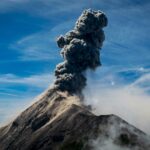 Previous Post
Previous Post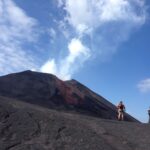 Next Post
Next Post